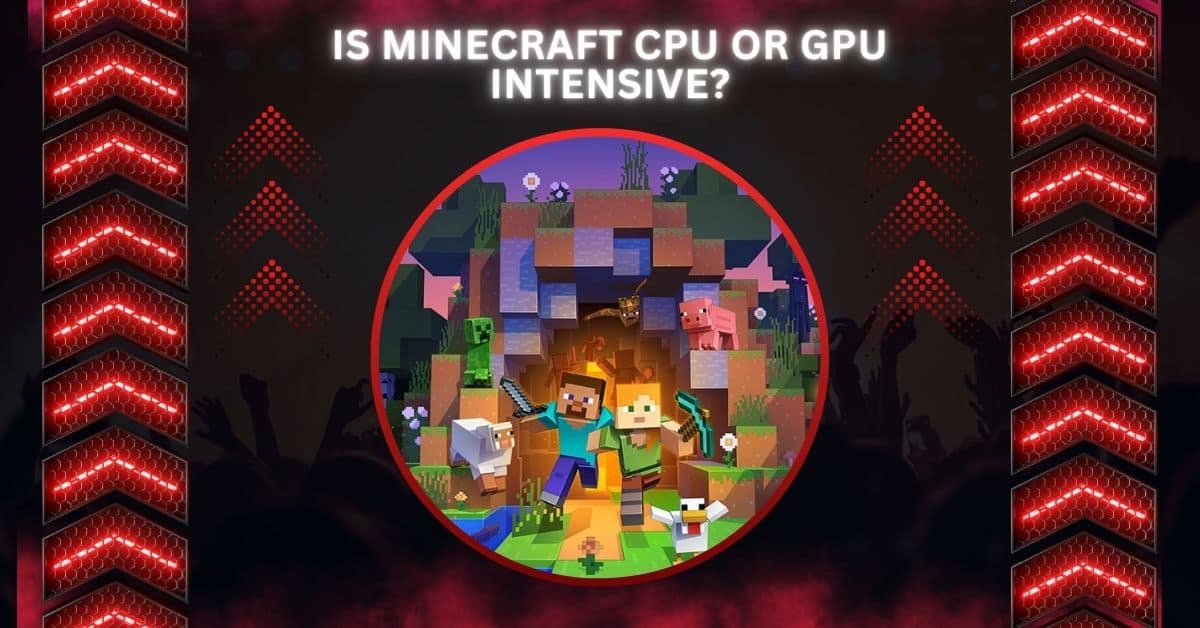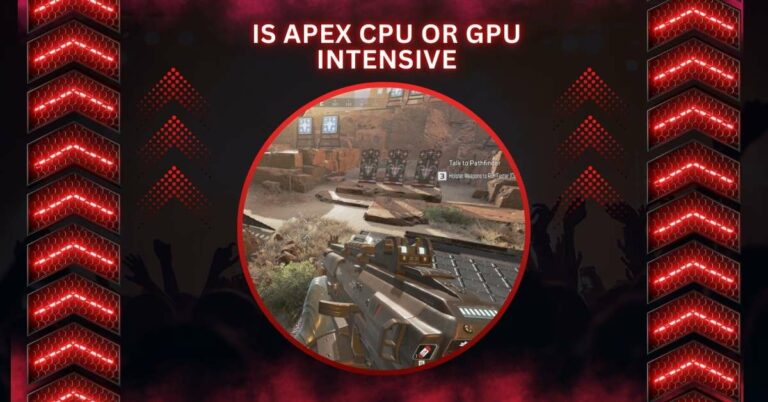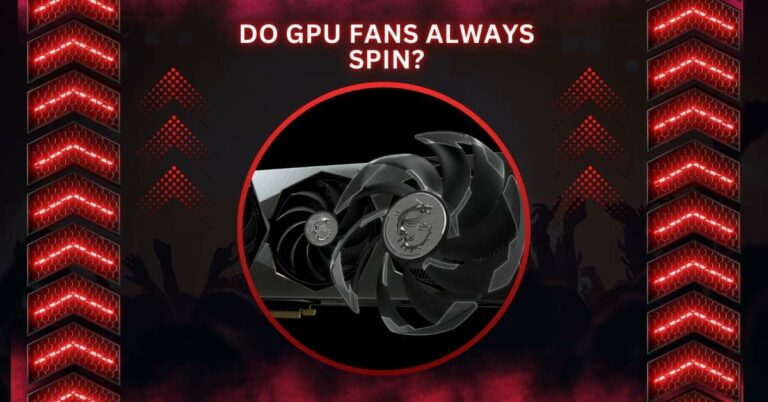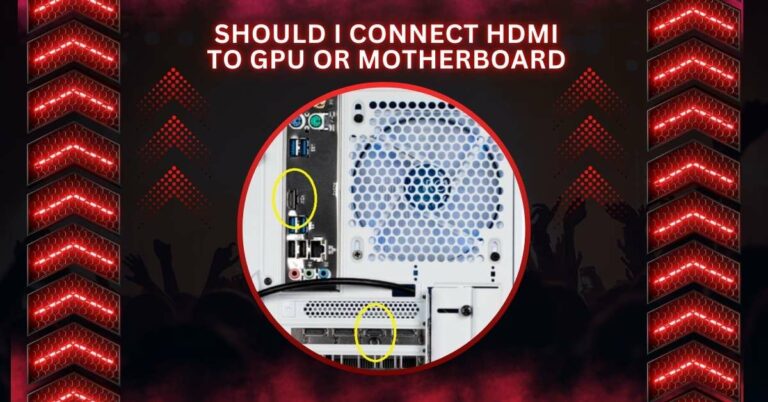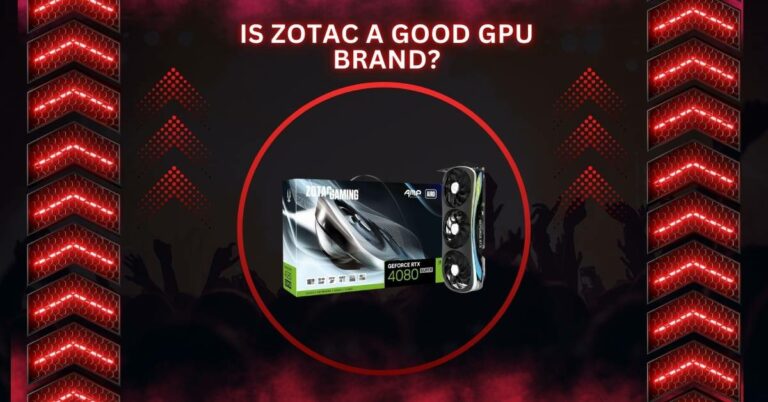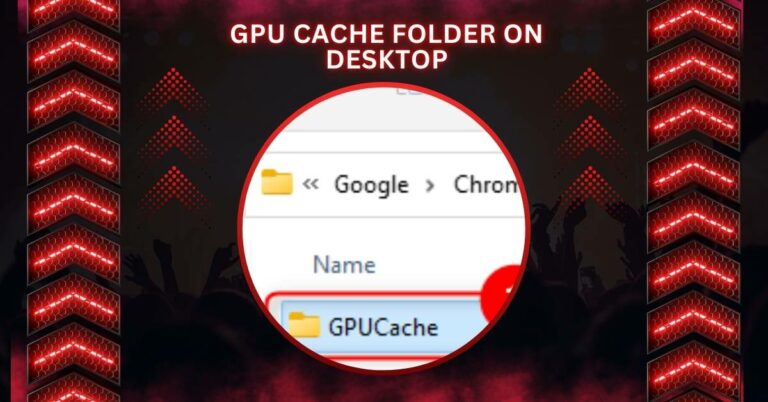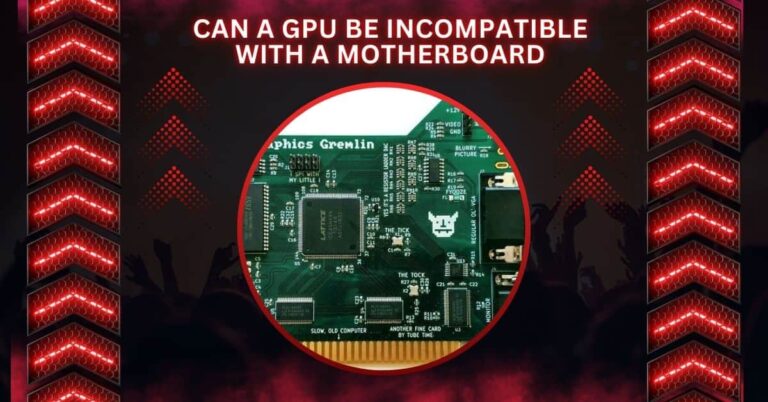Is Minecraft CPU Or GPU Intensive? – Insight For Gamers!
Minecraft is a popular sandbox game that allows players to build, explore, and interact in blocky 3D worlds.
Minecraft is generally CPU Intensive, relying heavily on the processor for tasks like world generation and Redstone mechanics. A good GPU is still necessary, especially for shaders and visual mods.
Let’s explain how Minecraft utilizes these components to help you understand which is more critical for a smooth experience.
Is Minecraft More CPU or GPU Intensive?
The CPU is used more often in Minecraft than the GPU. The CPU handles critical tasks like world generation, physics, and mob behavior.
A strong processor is essential to avoid lag, especially in multiplayer or large maps. However, the GPU also plays a role, mainly if you use high-resolution textures or shaders, which require more graphical power.
While a good GPU helps with visuals, a powerful CPU ensures smooth gameplay by efficiently managing the game’s logic and processing tasks.
How Does Minecraft Use the CPU?
Minecraft relies heavily on the CPU to handle essential tasks. The CPU manages world generation, mob behavior, and game physics, ensuring smooth block updates and interactions.
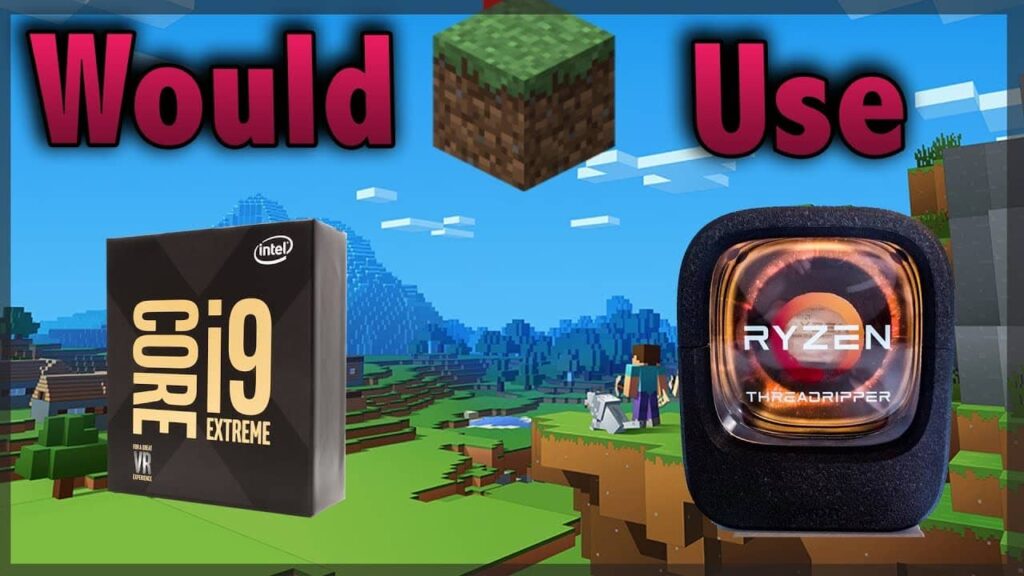
It also runs all the logic for multiplayer sessions, such as player movements and server synchronization. Since Minecraft uses multiple threads to manage these tasks, having a processor with good clock speeds and more cores can make gameplay smoother.
If the CPU is slow, you may see lag when loading new chunks or handling many entities simultaneously.
Role of GPU in Minecraft’s Performance
The GPU takes care of:
- Rendering textures and animations: Smooth visuals rely on sufficient video memory (VRAM).
- Lighting effects and shaders: The GPU processes dynamic shadows and particle effects.
- Frame rates and resolution scaling: Higher resolutions like 1440p or 4K demand more from the GPU.
For players running shaders or mods that add complex visuals, a powerful GPU becomes essential to avoid frame drops.
Must Read: GPU Cache Folder On Desktop – The Complete Guide In 2024!
What Happens if Your CPU is Weak?
A weak CPU can cause slow gameplay and lag spikes in Minecraft. The game takes longer to load chunks, and playing with many mobs or in multiplayer could feel choppy.
The CPU bottleneck can also affect frame rates, even if you have a powerful GPU. This can make exploring large worlds or using mods frustrating.
Additionally, the world generation may feel sluggish, and multiplayer servers struggle to keep up with player movements. If you experience this, lowering game settings or upgrading the CPU can improve performance.
How Mods and Plugins Affect CPU Usage
Mods and plugins make Minecraft more fun by adding new features and increasing CPU usage. Each mod or plugin adds extra logic for the CPU to process, such as managing new creatures, physics effects, or custom items.
Running several mods at once can quickly overwhelm weaker processors. This is especially true for mods that add complex mechanics like dynamic lighting or AI-controlled mobs.
Players must often test mods carefully to see how much they impact performance. You’ll notice lag and slower frame rates during gameplay if the CPU can’t keep up.
Large Worlds and Multiplayer: Strain on Both CPU and GPU
Playing in large worlds or on multiplayer servers puts much strain on the CPU and GPU. The CPU manages tasks like player movement, physics, and mob handling, while the GPU renders the visuals.
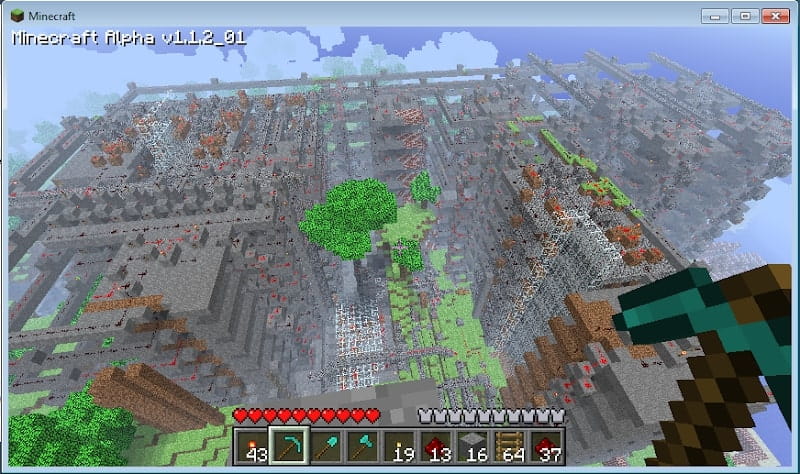
In large or custom-built worlds, the CPU must load new chunks and constantly track many entities. Multiplayer sessions require even more processing power since the CPU must synchronize actions between all players.
Meanwhile, the GPU works harder if shaders or high-resolution textures are enabled. Both components need to perform well to avoid lag and stutter.
GPU-Intensive Scenarios in Minecraft
Minecraft can be more GPU-intensive in certain situations:
- High-resolution texture packs: These require a GPU with ample VRAM.
- Shaders: Adding realistic lighting and reflections increases GPU workload.
- 4K resolution gaming: Rendering at higher resolutions demands more from the GPU to maintain smooth performance.
Minimum and Recommended System Requirements
To enjoy Minecraft smoothly, here are typical hardware recommendations:
- CPU: Quad-core (e.g., Intel Core i5 or AMD Ryzen 5)
- GPU: NVIDIA GTX 1060 or AMD RX 580 with 4GB VRAM
- RAM: At least 8GB (16GB preferred for mods). Meeting or exceeding these specs ensures a better experience, especially with mods or multiplayer.
Must Read: Pytorch Check If GPU Is Available – A Step-By-Step Overview!
Optimization Tips for Better Performance
1. Lower Render Distance
Reducing the render distance limits the amount of the world loaded simultaneously, easing the workload on the CPU and GPU. This helps avoid lag, especially in large maps or multiplayer servers.
2. Use OptiFine Mod
OptiFine is a popular mod that improves performance by optimizing graphics settings. It lets you adjust details like smooth lighting, animations, and particles to boost frame rates.
3. Update Drivers and Java
Make sure your graphics drivers and Java version are up to date. Minecraft uses Java, and the latest updates can improve stability and performance.
4. Close Background Applications
Shutting down unused applications frees up CPU and RAM, allowing Minecraft to run smoother. Apps like browsers and music players can slow down performance if left running.
5. Allocate More RAM to Minecraft
You can boost performance by assigning more RAM to Minecraft through the game’s launcher settings. This is especially useful if you play with mods or high-resolution textures.
6. Lower Graphics Settings
Disabling or reducing settings like shadows, fancy graphics, and particles can make a big difference. Lowering these settings reduces the GPU load, making gameplay smoother.
7. Upgrade Hardware When Needed
If performance issues persist, consider upgrading your CPU or GPU. Minecraft benefits from a strong CPU, but a good GPU is essential for smooth visuals when using shaders or playing at high resolutions.
Is Roblox CPU or GPU Intensive?
Roblox is mostly a CPU-intensive game. The platform relies heavily on the CPU for handling scripts, physics, and game logic.
While the GPU manages visuals like character models and environments, it’s not taxed as much. A powerful CPU ensures smoother gameplay, especially with complex games or background tasks.
Read More: Should I Connect HDMI To GPU Or Motherboard – Let’s Explore
Is Fortnite CPU or GPU Intensive?
Fortnite uses a balanced mix of CPU and GPU. The CPU manages tasks like game logic and networking, while the GPU renders detailed environments and effects. Robust hardware on both fronts helps maintain smooth gameplay, especially in visually intense scenes.
Is Valorant CPU or GPU Intensive?
Valorant relies on both the CPU and GPU but slightly leans toward CPU usage. The CPU handles gameplay logic and player actions, while the GPU ensures smooth graphics and animations.
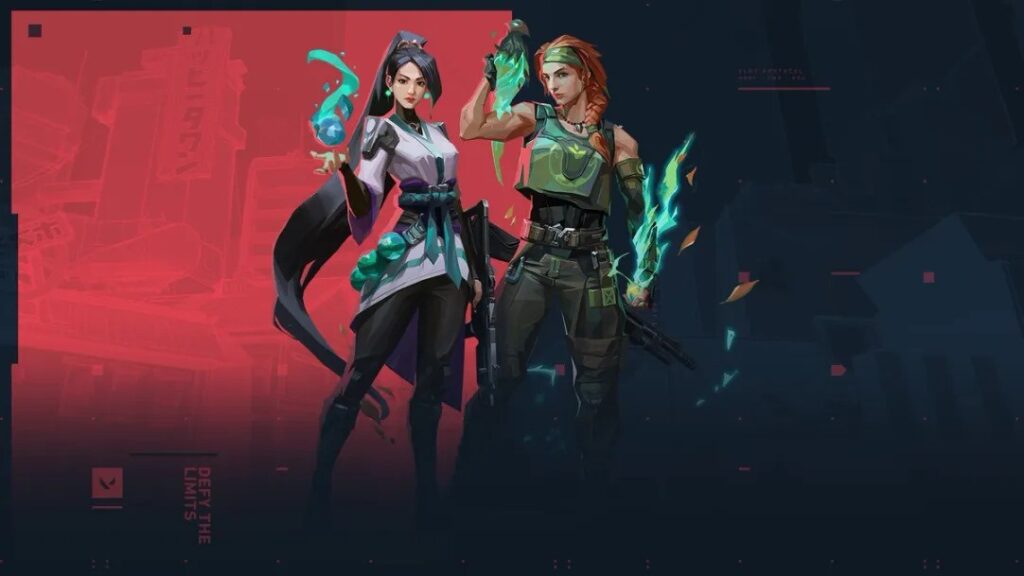
Both components should perform well to enjoy competitive gameplay and prevent lag during intense moments.
Is Modded Minecraft CPU or GPU Intensive?
Modded Minecraft is CPU intensive, especially for handling world generation and mods with complex mechanics.
However, a good GPU becomes crucial when using visual mods like shaders or high-resolution textures. A well-balanced system improves performance and reduces stutters when running multiple mods.
Is Minecraft Shaders CPU or GPU Intensive?
With shaders enabled, Minecraft becomes more GPU intensive. Shaders add lighting, shadows, and reflections, making the GPU work harder to render these effects smoothly. However, the CPU is essential for maintaining game logic, especially in large or complex worlds.
Is Minecraft Bedrock CPU or GPU Intensive?
Minecraft Bedrock Edition leans toward CPU usage but benefits from a decent GPU. The CPU handles world generation and player actions, while the GPU ensures smooth visuals. Bedrock is optimized to run well even on lower-end devices, but more powerful hardware can still enhance the experience.
Read Out: Is Wow CPU Or GPU Intensive – A Detailed Guide In 2024!
FAQs
1. Is Minecraft RTX CPU or GPU Intensive?
Minecraft with RTX shaders is GPU-intensive. The ray tracing feature pushes the GPU to render realistic lighting and reflections, though a decent CPU is still essential for game logic.
2. Does Minecraft Take a Lot of CPU?
Yes, Minecraft relies on the CPU for tasks like world generation, chunk loading, and Redstone logic, especially in larger worlds or with multiple mods installed.
3. Is Minecraft a Graphic-Intensive Game?
Minecraft is not traditionally graphic-intensive, but using shaders or high-resolution textures can make it demand more from the GPU.
4. Is Minecraft More CPU-Dependent?
Minecraft is CPU-dependent, especially for managing game mechanics like Redstone, entities, and world loading, though a capable GPU improves visuals.
5. Is 4090 Overkill for Minecraft?
Yes, the RTX 4090 is overkill for Minecraft using heavy shaders or high-resolution mods. A mid-tier GPU can already run it smoothly.
6. Should I Run Minecraft on CPU or GPU?
Minecraft uses both, but it’s better optimized for the CPU. Offloading some tasks to the GPU improves performance when using mods or shaders.
7. Will a Better CPU Increase FPS in Minecraft?
Yes, a better CPU boosts FPS by handling chunk loading and redstone mechanics more efficiently, especially in complex worlds.
8. Is Heavily Modded Minecraft More GPU or CPU Intensive?
Heavily modded Minecraft is more CPU-intensive, but visual mods like shaders make the game demand more GPU power.
9. How to Make Minecraft Use Your GPU?
To force Minecraft to use your GPU, set the GPU as the preferred processor in your system settings or graphics control panel.
10. Is Minecraft More Demanding on Your CPU or GPU?
Minecraft demands more from the CPU for core functions, but a strong GPU is necessary if you’re using shaders or high-end visual mods.
Conclusion
Minecraft is generally more CPU-intensive, handling tasks like world generation, physics, and mob behavior. However, a good GPU is essential for smooth visuals when using shaders or high-resolution textures, ensuring a balanced and enjoyable gameplay experience.
